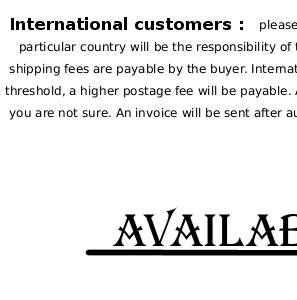
Money of the Bible !, 9 BC-40 AD, Graded F12, Nabataean Prutah coin, Aretas IV
Check my rate
View locations
| Main centres: | 1-3 business days |
| Regional areas: | 3-4 business days |
| Remote areas: | 3-5 business days |

| Main centres: | 1-3 business days |
| Regional areas: | 3-4 business days |
| Remote areas: | 3-5 business days |
Money of the Bible
Aretas IV
Nabataean Prutah Coin, Slabbed and Graded


The prutah was an ancient bronze coin worth about one thousandth of a pound. A loaf of bread at that time was worth about 10 prutot (plural of prutah). One prutah was also worth two lepta (singular lepton), which was the smallest denomination minted. Prutah is a word borrowed from the Talmud, in which it means "a coin of smaller value". The word was probably derived originally from an Aramaic word with the same meaning.

Aretas IV is actually mentioned in the Bible by the Apostle Paul. Aretas IV. is the Aretas whose governor at Damascus attempted to imprison Paul the apostle while the latter was on his missionary journey (2 Corinthians 11:32, 33, cf Acts 9:23, 24)
Aretas IV Philopatris was the King of the Nabataeans from roughly 9 BC to AD 40. His full title, as given in the inscriptions, was "Aretas, King of the Nabataeans, Friend of his People." Being the most powerful neighbor of Judea, he frequently took part in the state affairs of that country, and was influential in shaping the destiny of its rulers. While on not particularly good terms with Rome—as intimated by his surname, "Friend of his People," which is in direct opposition to the prevalent "Friend of the Romans" and "Friend of the Emperor".
He is known as "Philopatris," and was called "the King who loves his people." During his reign, the Nabataean Kingdom reached its zenith. He was in control of Damascus when his Ethnarch tried to arrest the Apostle Paul. (2 Corinthians 11:32, 33)
His daughter Phasaelis married Herod Antipas (Matthew 14 : 3)(Luke 3:19)(Luke 13:31)(Luke 23:7-12)(4 BC – AD 39), otherwise known as Herod the Tetrarch. When Herod divorced Phasaelis to take his brother's wife Herodias(the same Herodias who plotted the death of John the Baptist)(Mark 6:18), mother of Salome(who danced before Antipas for John the Baptist's head)(Mark 6:22), in 36AD, Phaesalis fled to her father. Relations between Herod and Aretas IV were already strained over border disputes, and with his family honour shamed, Aretas IV invaded Judea, and captured territories along the West Bank of the Jordan River, including the areas around Qumran.
Herod Antipas was the brother of Herod Archelaus(Matthew 2:3) who tried to kill the infant Christ child in the slaughter of the innocents(Matthew 2:16), where Joseph and Mary escaped to Galilea(Matthew 2:22).
Malichus II, who was the first-born son of Aretas IV, is speculated by some to be Melchior - one of the three wise men who brought gifts to the baby Jesus Christ at Bethlehem.
The coin depicts the conjoined busts of both King Ateras IV with Queen Shuqailat on the obverse. The reverse depicts Two crossed and filleted cornucopiae, with an Aramaic legend. Likely to have been minted at Petra between 19AD and 39AD. The coin has a slight light green patina.




 INTERNATIONAL CUSTOMERS WELCOME
INTERNATIONAL CUSTOMERS WELCOME 





